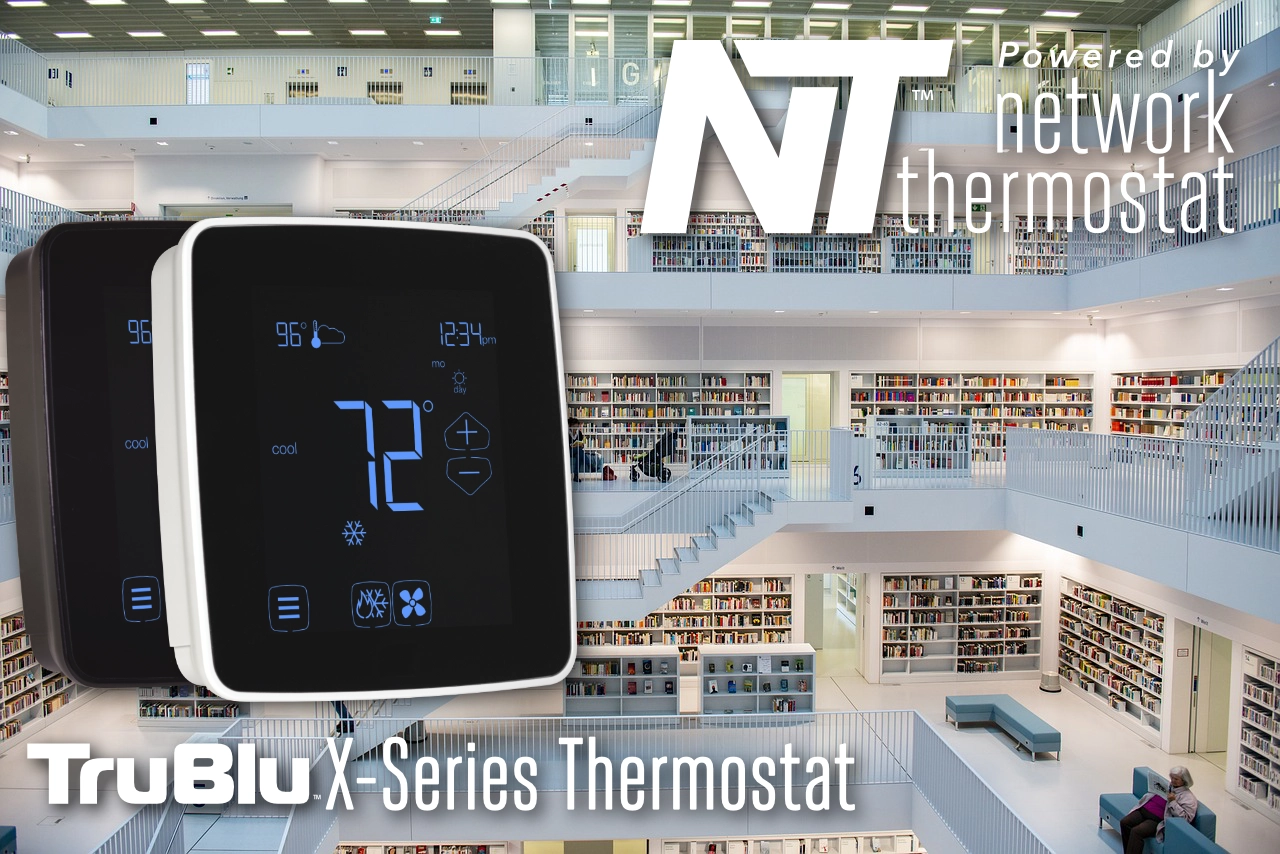
Smarter Energy Management Through Lighting System Integration
Occupancy-driven HVAC control bridges lighting and climate management to reduce energy waste and extend equipment life without sacrificing comfort in commercial spaces. With Network Thermostat (NetX), lighting system occupancy data can now drive intelligent HVAC control—without requiring a full Building Management System (BMS).
The Benefits of Occupancy-Driven HVAC Control
Commercial buildings spend a significant portion of their energy budget on heating and cooling unoccupied spaces. By linking lighting occupancy sensors to HVAC operation, facilities can automatically adjust temperature setpoints based on room usage.
Whether retrofitting an existing building or designing a new project, this integration offers a fast, cost-effective way to enhance efficiency and sustainability.
Deliver Measurable Results
- Lower Energy Costs: Condition only occupied spaces without complex scheduling.
- Extended Equipment Life: Reduce wear on HVAC systems by minimizing unnecessary runtime.
- Seamless Integration: Leverage the occupancy sensors in modern lighting systems.
- Simple Retrofit: Connect lighting and HVAC without significant electrical work.
- Scalable Across Facilities: Add occupancy-based HVAC control across multiple zones or entire campuses—no BMS required.
Core Capabilities
- Bluetooth SIG Compliance
- Network Lighting Control (NLC) Certified
- Integrates Directly with the NetX Thermostat Families
- Connects via Industry Standards
Working Together
- Develop or Co-Develop Custom Lighting Controls Use Cases
- Private Label Options
- Collaborative Engineering
NetX Benefits
- Commercial Grade B2B Manufacturer
- US Designed, Manufactured, and Supported
- Precommissioned Rollouts
- Substantial Margins
End User Benefits
- Coordinated Lighting & HVAC Energy Efficiency
- Streamlined Maintenance and Management
- Scalable & Customizable
- Local Network & Cloud Management
The Technical Solution
The system utilizes Bluetooth® Network Lighting Control (NLC) technology to bridge occupancy data from lighting systems into the HVAC control layer. An mwConnect module, installed in the X-Series thermostat expansion slot, communicates occupancy data directly to the thermostat.
The new Soft SetbackTM feature from NetX enables “Occupied Standby” operation, as defined in ASHRAE/IES 90.1 (6.5.3.8), IECC 2024 (C403.7.8), and California Title 24 (120.1(c)5). Soft SetbackTM allows the thermostat to automatically adjust temperature settings when a room is unoccupied—reducing HVAC energy use—while maintaining a standby comfort range for quick recovery when occupants return. By integrating occupancy data from the lighting system, Soft SetbackTM delivers compliant, efficient, and occupant-friendly HVAC control.
This solution seamlessly interoperates with the Silvair control platform, allowing HVAC systems to respond automatically to real-time occupancy information. The result is a unified, energy-efficient approach to building control—simplifying management for contractors, integrators, and facility operators alike.
Collaborative Technology from Industry Leaders
This solution is a collaboration between NetX and mwConnect, a technology partner of Silvair. Together, these companies are enabling smarter building ecosystems on open, interoperable technologies through the TruBlue X-Series Thermostat powered by NetX.
Build America, Buy America (BABA) Compliant
NetX is proud to be a BABA-compliant manufacturer. Our products are designed, engineered, and assembled in the United States, supporting domestic supply chains and ensuring compliance with U.S. federal funding requirements. Working with Network Thermostat helps your projects meet BABA standards while supporting American manufacturing.
Ready to Get Started?
Connect with our team to learn how NetX and mwConnect can bring occupancy-driven HVAC control to your next Silvair lighting project.
